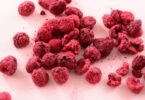Here are two of the easiest methods to dehydrate food naturally.
If you think the only way to preserve fruits and veggies is by using a dehydrator, there are other options you can explore. For instance, you can dehydrate food naturally at home with a few simple steps. So if you have no electric dehydrator and you have some fresh produce you want to desiccate, this short guide will show you the step-by-step methods.
Keeping your food fresh is not the only reason you need to use the drying method. When you dehydrate food naturally or with some equpment, you are also prolonging its shelf life. From preparation, dehydration to storing your dehydrated food – here’s everything you need to know to start.
How to Dehydrate Food Naturally
Dried fruits, vegetables, and other foods are easy to prepare, carry, and use. Some of the important factors in successful drying include:
- stable (warm) temperature,
- good air circulation,
- and low humidity.
Dehydrating is easier than canning because after preparing your slices, just allow them to dry through sun or air drying. After that, you can put them in zip-top bags to keep your food fresh and dry until you’re ready to eat or use them in cooking.
You need the right combination of air circulation, low humidity, and warmth in order to naturally dry foods. Low humidity helps diffuse moisture to the air from your food items. Warm temperature or low heat allows moisture to vaporize, while air circulation speeds up drying.
There are several ways to naturally dry your foods. The following are the best and the easiest methods to dehydrate food naturally.
Sun-drying foods
One of the oldest and simplest ways to dehydrate food is sun drying. This has been used for thousands of years and is still relevant up to this day. You just place your sliced fruits or veggies on racks and let the sunlight take moisture from your food.
If you’re in a location where the hot climate is more prevalent, this is the best method to use. However, if the temperature in your area is at least 86 degrees Fahrenheit (25 – 30C)and with 60 percent humidity, then it will still work. Just make sure that sliced fruits, for example, are set to dry for several days.
Air-drying foods
Another ancient method to dehydrate food is air drying, but this is used to preserve food while protecting them from direct heat or sunlight. It only needs you to place your herbs, greens, flowers, and other delicate produce under the shade so they won’t be damaged by the sun.
If you want to save for herbal teas and other culinary mixes, air drying is the best option. Tie a bundle of these greens, for instance, then hang it somewhere with good ventilation to allow the food to dry. Good air circulation will draw the moisture from your garden bounty.
You can dry almost any foods that are still fresh such as fruits, vegetables, meat, fish, nuts, seeds, sprouted grains, herbs, crackers, granolas, and …. Just remember that some foods dehydrate more successfully than others.
Even though drying food naturally seems like the most natural way to dry your food, it is safer and more time saving to use a dehydrator or even an oven. It really depends on the amount of food you want to dehydrate – if the quantity is small, try a dehydrator or oven. If the quantity of food you want to dehydrate is large, then natural methods might be the way to go.
READ ALSO: How to Dehydrate Food Successfully: A Beginner’s Guide
Storing dehydrated food properly
Before you store any dehydrated foods, check for dryness. If the veggies are brittle, that means they are ready for storage. On the other hand, the leather-like feeling when you touch the fruits is a sign that they are also set for storing. Once they are safely dried, allow them to cool (in case of sun-drying) before putting in a jar or container.
Always check your food while giving it time to cool because a longer cooling period may cause moisture to re-enter your food. Lastly, choose an appropriate container to store your dehydrated fruits and veggies. Keep in mind that proper storage will prevent rodents and insects from sneaking your food.
To ensure that your chosen container will keep out moisture and save nutrients, here are some tips to consider:
- Use vapor-proof freezer boxes, metal cans, glass jars, and cartons with tight lids.
- Tighten covers and lids on glass containers to prevent insects and other harmful elements from consuming your dried foods.
- Choose rodent- and insect-proof plastic bags made with pressed seals.
- Always check the containers, plastic bags, or cartons within 10 days to make sure moisture is not present. Immediately remove the food if you spot some wetness to redry again. However, if your food is already moldy, dispose it of properly and sterilize the container if you intend to reuse it.
READ ALSO
Depending on your storage methods and conditions, the shelf life of dehydrated foods can reach up to 12 months. To achieve the best quality, you can store your dried foods in a place with a temperature of 60 degrees Fahrenheit. However, it’s not required to store them in a freezer or refrigerator. The only exception is meat jerky which should be stored in low temperatures in order to extend its shelf life.
If you’re looking to save money, reduce waste, create better flavor, achieve nutritional quality, and easily prepare foods at home, dehydrating food naturally is the perfect solution. So, what types of foods are you planning to preserve?
Image: Kellogg Garden





